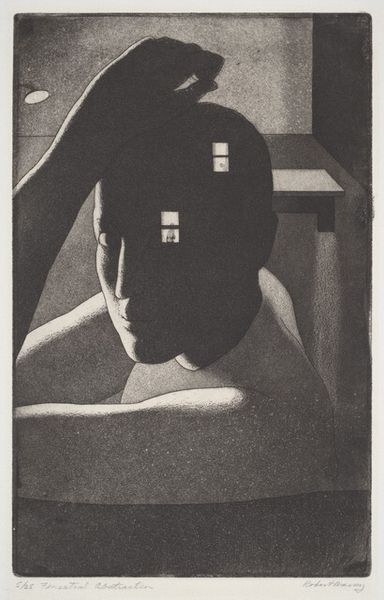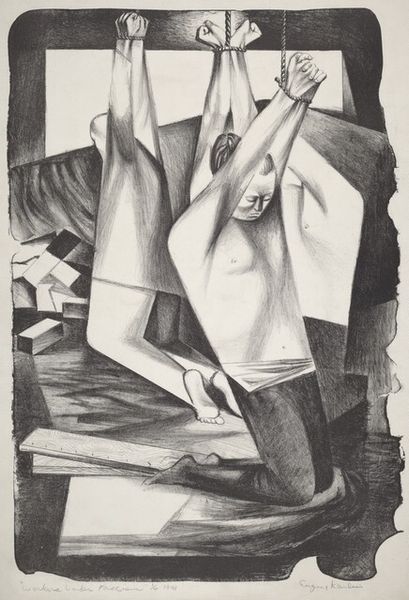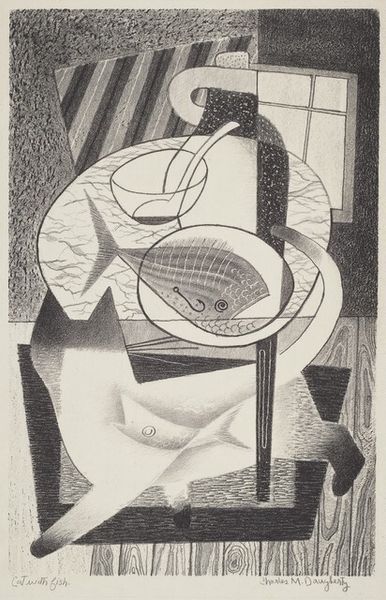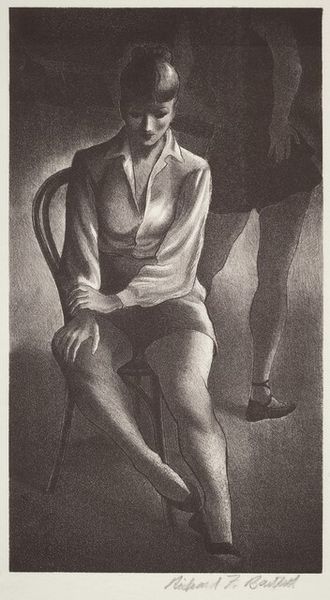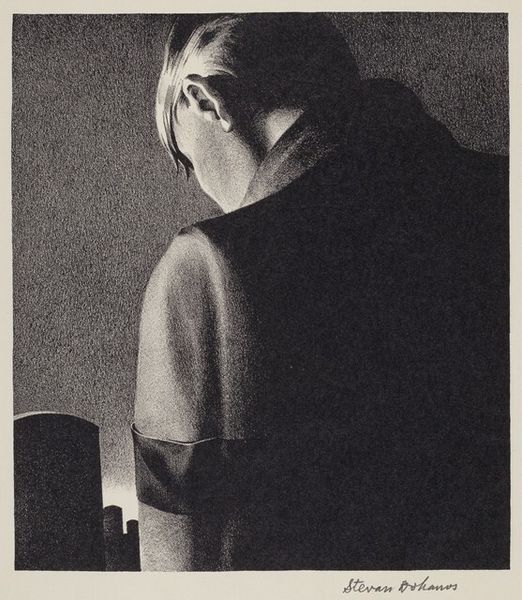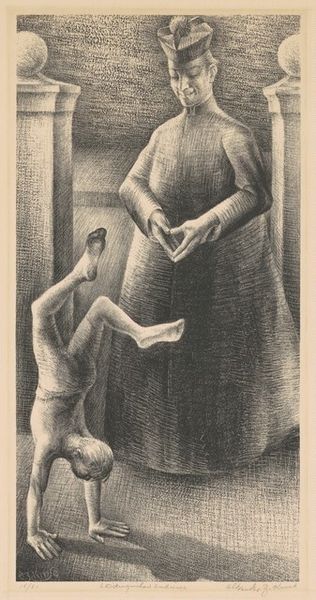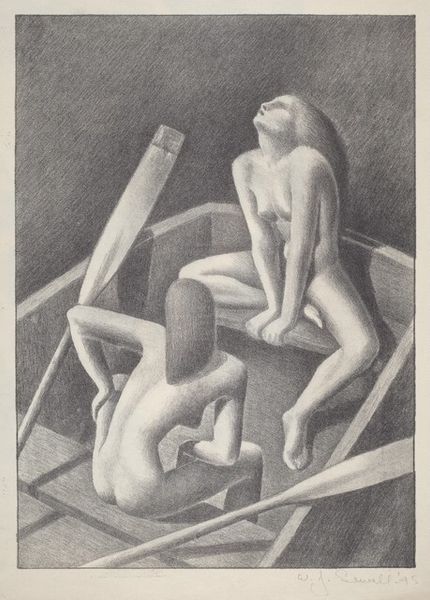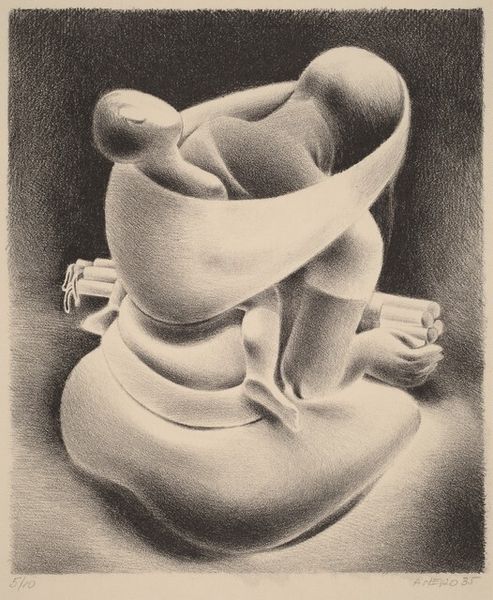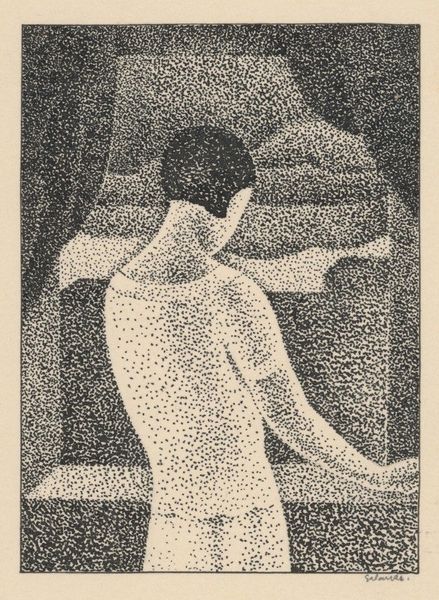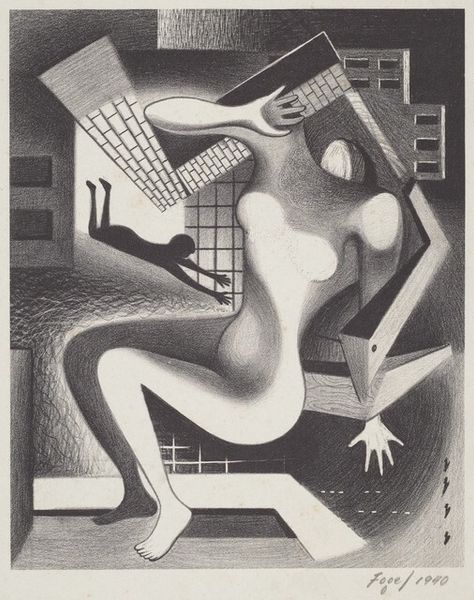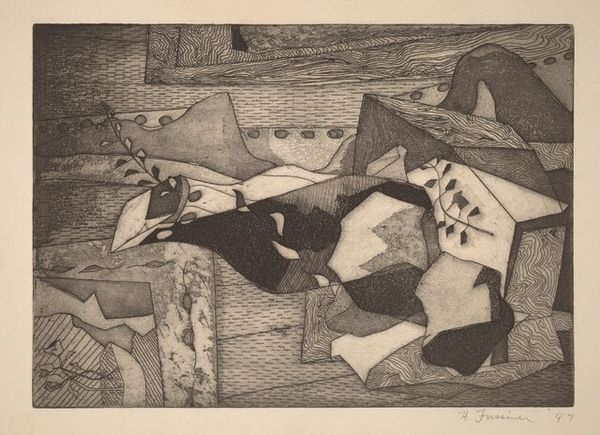
drawing, print, charcoal
#
portrait
#
drawing
# print
#
caricature
#
charcoal drawing
#
figuration
#
portrait drawing
#
charcoal
#
realism
Dimensions: Image: 250 x 188 mm
Copyright: National Gallery of Art: CC0 1.0
Curator: Welcome. We are looking at "Manicure" by Paul Weller, a print rendered in charcoal, showing a figure absorbed in personal care within what seems to be an industrial setting. What's your first take? Editor: Strikingly stark. The intense contrasts of light and shadow give it a somber mood. The figure's hunched posture and the sharp angles of the setting contribute to an overall sense of isolation. Curator: That's insightful. The piece emphasizes class distinctions and the democratization of everyday practices. Weller's background clearly informed his subject choices. We see his attention toward representing the modern working class. Editor: The figure’s posture and musculature certainly suggest physical labor. But look closely at the balance of light; the smooth skin offset against heavily shaded work clothes, creating depth through contrast. Curator: Absolutely, there is definitely social commentary implied through labor. "Manicure," I feel, reclaims a space of mundane care typically segregated along gender and class lines by the upper and middle class. We are now considering the working male performing care labor on his hands. Editor: And Weller emphasizes line quality to create the space. Notice how the sharp lines delineate the edges of forms, creating this very intimate, personal world within an industrial space, yet still somehow enclosed and trapped. Curator: I agree, that enclosed atmosphere is important. By portraying care, Weller confronts perceptions of men and masculinity and raises them within spaces marked for production. Editor: Right, and these contrasts enhance this central paradox. It captures both vulnerability and strength within a very tight composition and small scale work. It pulls you in to examine very closely. Curator: It becomes an artifact of care labor; a practice rooted in the body, the self, but reflective of the broader social structures within which such a task is even conceived. Editor: Ultimately, the artist succeeds in extracting such a beautiful expression within such austerity. It becomes the core point of our inquiry here. Curator: Indeed, Weller masterfully reframes conventional art forms to foreground questions about the relationship between personal care, class, and modern work, doesn't he?
Comments
No comments
Be the first to comment and join the conversation on the ultimate creative platform.
